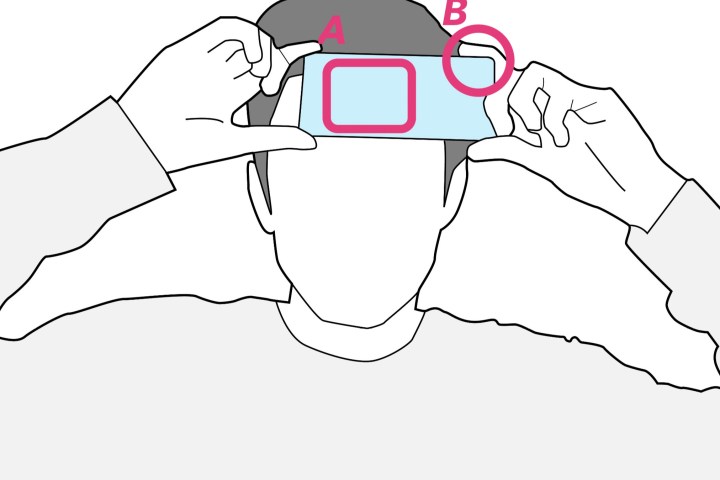
Google is eyeing a piece of the health market with the upcoming Pixel 8 Pro, thanks to a temperature sensor that would reportedly let users sense fever symptoms. Unlike the ill-fated Soli radar sensor on the Pixel 4 series, this one makes sense. Keeping an eye on your body temperature, especially the fluctuations, is crucial as abnormal spikes or drops can be a sign of serious body system malfunctions and diseases.
As such, there’s no dearth of mobile apps that let users keep track of their body temperature and create a long-term log that can be useful during medical consultations. However, smartphones can’t reliably measure body temperature because they lack a dedicated sensor to do so based on the usual skin contact method. But soon, an app would do the job on almost every modern Android phone out there instead of keeping the perk exclusive to Google’s next pricey flagship.

Joseph Breda, a research student at the University of Washington’s Paul G. Allen School of Computer Science and Engineering, has created a smartphone app that can reliably measure body temperature and detect fever symptoms, using the same embedded sensor that is responsible for keeping a tab on the heat generated by a phone’s battery.
The phone’s screen needs to be held against the forehead skin for 90 seconds to measure the heat transfer and estimate the body temperature. According to the research paper, further experimentation is needed when other regions of the body are used for temperature assessment.
The average error between readings taken by the FeverPhone app and a medical-grade thermometer was found to be 0.41 degrees Fahrenheit, which is well within the clinically acceptable error range for thermometers. The team behind the app says its accuracy is in the same ballpark as “some comparable thermometers.” The broad objective behind the app is to achieve something along the lines of the COVID-19 exposure warning system for phones.
Addressing accessibility with ubiquity

Touted be the first app of its kind that employs a phone’s battery temperature monitoring sensor to measure the skin temperature, FeverPhone has been clinically tested and has yielded encouraging results. The end goal is to make temperature measurement more accessible and easier, especially in times of mass emergencies — such as a disease outbreak where hospitals and labs are overflowing.
What the app does is measure the heat transfer happening between a phone and a person’s skin through the screen, while the measurements are taken by the thermistor fitted inside a phone. The thermistor essentially measures the air temperature and the spike in heat temperature when the phone’s screen touches a person’s skin.
During the development phase, which involved calibration and creating a data-driven model for temperature mapping, the team used a Google Pixel 6, Pixel 3, and a Huawei P20. Notably, putting a case on a phone results in a tangible variation in the skin temperature measurement, but the research paper says some calibration could help address this problem.
There are still challenges to overcome

As promising as FeverPhone sounds, there are still some challenges. To start, the app is not yet available in the public domain. “The app is not currently available but it may be made available with further development. The app itself is not very complicated,” FeverPhone creator Breda told Digital Trends via email.
While the app’s non-availability in itself is a bummer, another shortcoming is the lack of definitive support for current-gen smartphone hardware. This primarily has to do with the fact that every phone has its own unique internal hardware design, which means the position of the thermistor also varies.

To put it in simple words, the app would currently yield accurate results only if you are using a Pixel 6, Pixel 3, or a Huawei P20 because they’ve been calibrated and the machine learning models have been tuned for them. When asked if the type of screen hardware — OLED or LCD — can also have an impact on the net heat transfer and, consequently, the temperature readings, the app’s creator says it can’t be neglected.
“Some phones may work out of the box. Other phones may need calibration. Calibration simply means making recordings with a known ground truth a few times on the new device to update the model parameters,” Breda tells me. On the positive side, adding support for a new phone would only involve minor modifications to the calibration model to adjust for its unique internal hardware, while the original machine learning model remains useful as the foundation.
The final hurdle is that FeverPhone needs root access to a phone so that it can read and collect data points from all components fitted inside a phone. “The root access is needed to read some of the hardware components used for sensing the signals used to model temperature. For example, you cannot just read the capacitance on a touch screen on a regular phone,” Breda explains. Or, a smartphone manufacturer can simply make all that data available so that there is no need to root a phone.
But at the end of the day, FeverPhone is a project with immense potential. Moreover, Breda is already testing the system with smartwatches. “In my early stages of development, I tried this out with a Fossil Sport and was able to get a clear signal of heat transferring from the user to the watch,” Breda tells me. In the future, he has plans to involve more smartwatches to test the efficacy of the FeverPhone models for the smartwatch form factor.

